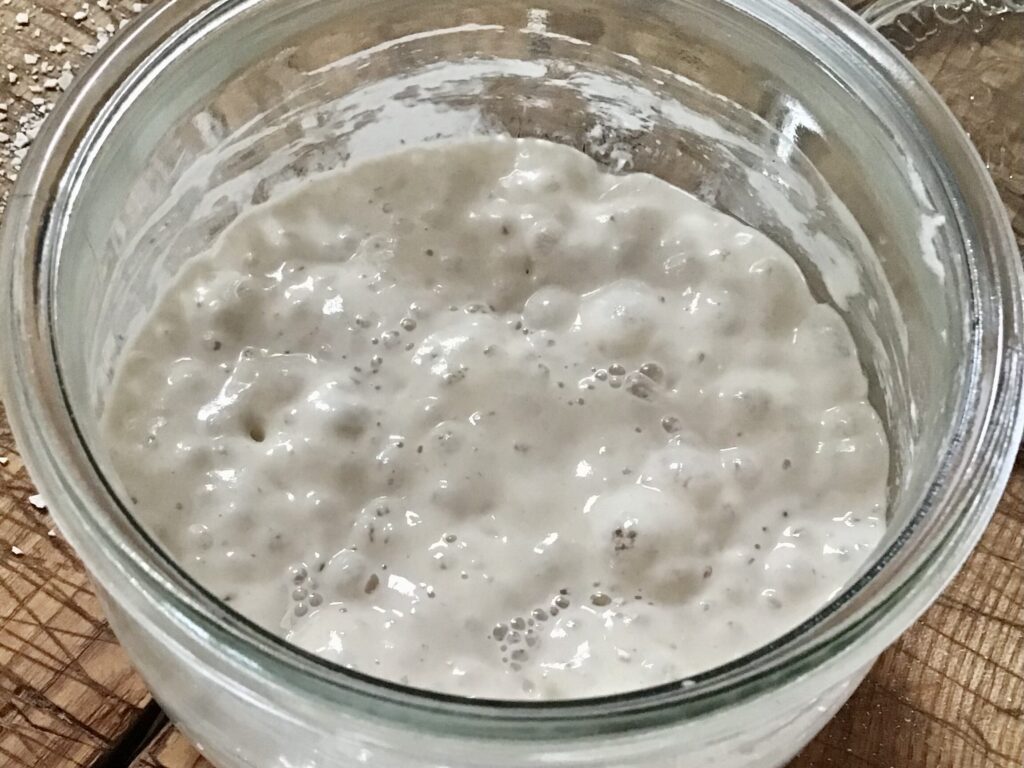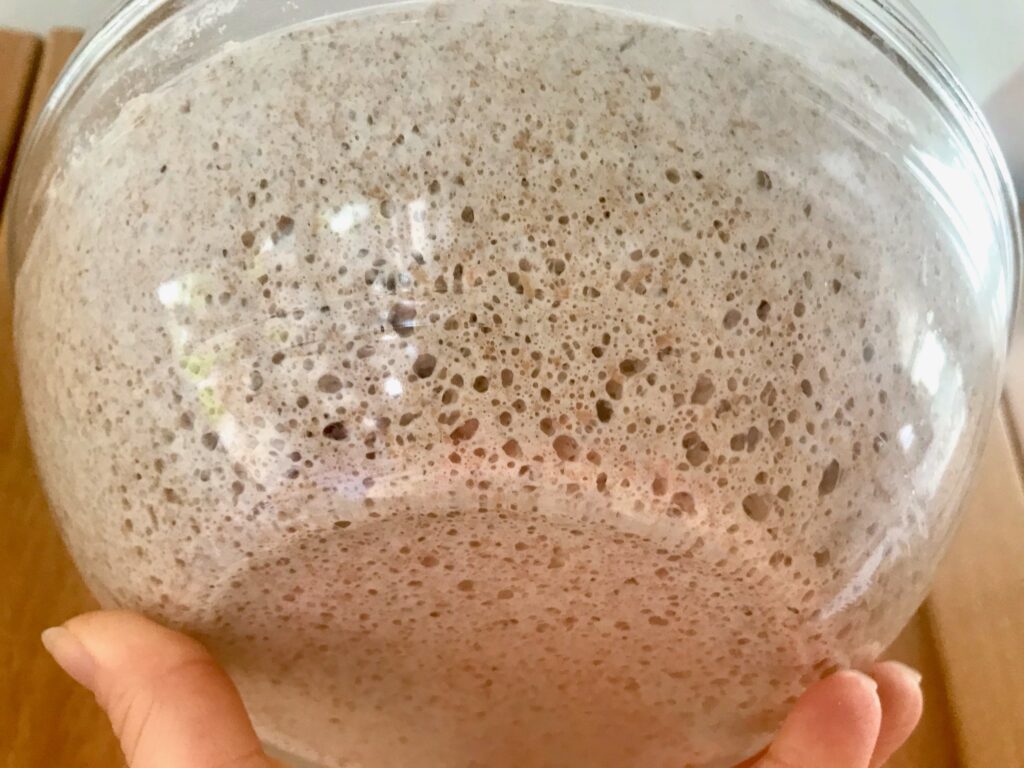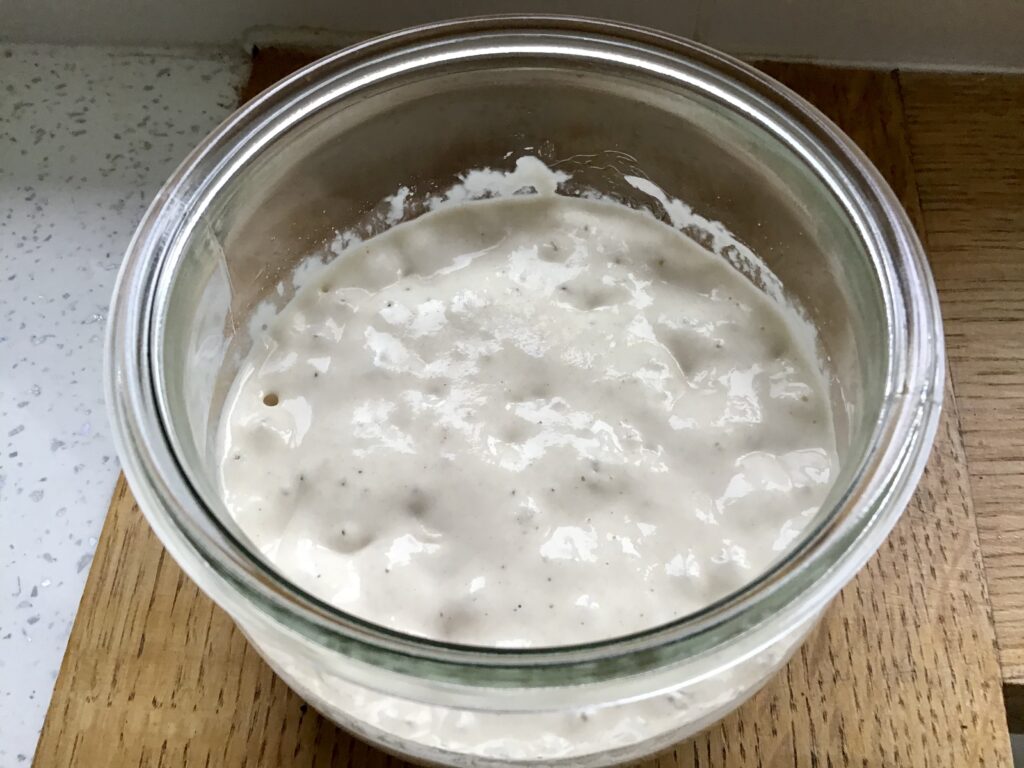
‘Sourdough starter’ is the ‘yeast element’ used for making sourdough loaves, it’s what gives sourdough it’s great flavour and all those gorgeous holes.
Starter is a thick liquid made from flour and water, developed over time to cultivate the wild yeast and good bacteria found naturally in the flour and in the air. You can’t see the yeast, or buy it, the process of making a starter with flour and water generates the power and flavour needed to make sourdough bread, hence the bubbles in the mixture and the slightly sour smell.
Your starter is, in essence, a living thing that needs feeding and looking after, which sounds a lot harder than it actually is. Some people view their starter as another member of their family, some people get paranoid about looking after it properly, but if you follow these instructions, you will see that owning a sourdough starter doesn’t have to mean your life has to go on hold! It needs feeding and tending when you want to use it, otherwise weekly whilst you’re not.
If I wanted to get arty, I would keep my starter in a jar and take amazing photos of its growth and activity to share with you, however, I am all about practical working habits and as such, I don’t keep my starter in a jar. Starter is sticky stuff, it gets everywhere and clings on! (You’ll find this when you have utensils that you’ve used to stir your starter, you need to wash them up immediately or get them soaking some water, otherwise starter dries hard and is very tough to shift). I found that keeping my starter in a jar, even a supposedly wide mouthed jar, made it such a mess to spoon it out of, that I keep my starter in covered bowls, and it works for me. My starter has now lived in the same bowl for many years, hence why the bowl is crusty with dried flour and starter up the sides! It’s may not be pretty, but it works.


In the following pages you will find: how to make a starter, how to maintain your starter and how to boost your starter..
